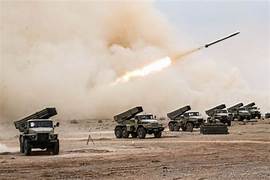Skip to content

Pakistan and Iran Exchange Airstrikes Amidst Regional Conflict and Political Pressures.

- Pakistan launched airstrikes against alleged militant hideouts inside Iran on Thursday, resulting in at least nine casualties as retaliation for a similar attack by Iran two days earlier.
- The attacks targeted Baluch militant groups on both sides of the Iran-Pakistan border, with accusations from each country regarding providing haven to these groups in their respective territories.
- Both countries face internal political pressures, with Iran dealing with unrest against its theocracy and seeking to assert military power, while Pakistan responds to the need for a strong stance ahead of a crucial February general election.

- The recent tensions between Iran and Pakistan add to the regional conflict backdrop, including Israel’s war with Hamas in Gaza and Iranian airstrikes in Iraq and Syria.
- Pakistan’s Foreign Ministry described its attack as a series of highly coordinated and specifically targeted precision military strikes, using drones, rockets, and standoff weapons.
- Iran reported casualties, including women, children, and men near the town of Saravan, denying that the victims were Iranian citizens. The Baluch Liberation Army claimed the strikes targeted and killed its members.
- Pakistan named its operation “Marg Bar Sarmachar,” translating to “death to the guerrillas” in Farsi.
- The targeted groups, Jaish al-Adl, Baluch Liberation Army, and Baluchistan Liberation Front, have different backgrounds and affiliations, adding complexity to the situation.

- The risk of escalation remains, with Iran starting an annual air defense drill, including live fire from aircraft, drones, and air defense systems.
- Iran and Pakistan share a largely lawless border, and the tensions raise questions about military preparedness, particularly radar and air defense systems. Complex geopolitical considerations involve China, a crucial partner in both countries, urging restraint amid the escalating situation.



